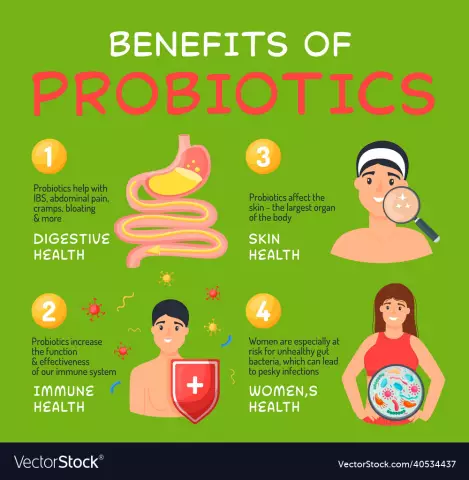- Author Rachel Wainwright [email protected].
- Public 2023-12-15 07:39.
- Last modified 2025-11-02 20:14.
Ovidon
Ovidon: instructions for use and reviews
- 1. Release form and composition
- 2. Pharmacological action
- 3. Indications for use
- 4. Contraindications
- 5. Method of application and dosage
- 6. Side effects
- 7. Overdose
- 8. Special instructions
- 9. Drug interactions
- 10. Analogs
- 11. Terms and conditions of storage
- 12. Terms of dispensing from pharmacies
- 13. Reviews
- 14. Price in pharmacies
Latin name: Ovidon
ATX code: G03AA07
Active ingredient: Levonorgestrel + Ethinylestradiol (Levonorgestrel + Ethinylestradiol)
Producer: Gedeon Richter Ltd (Hungary)
Description and photo update: 2019-05-08

Ovidon is a drug with contraceptive, estrogen-progestogenic action.
Release form and composition
Dosage form of release - tablets (21 pcs. In blisters, 1 package in a cardboard box).
The composition of 1 tablet contains active ingredients:
- Levonorgestrel - 0.25 mg;
- Ethinylestradiol - 0.05 mg.
pharmachologic effect
The principle of Ovidon's action lies in the ability of active substances to slow down ovulation and disrupt the normal course of the secretory phase of the menstrual cycle, leading to the occurrence of temporary atrophic changes in the endometrium and preventing the implantation of a fertilized egg. The ovaries remain at the resting stage while taking Ovidon. At the same time, additional changes are noted in the endometrium, cervical canals, fallopian tubes.
The use of the drug causes an increased viscosity of secretions from the cervical canal, which excludes the penetration of the sperm, and a decrease in the thickness of the endometrium prevents the attachment of the egg to the walls of the uterus. This complex effect avoids fertilization.
Subject to the rules of admission, the effectiveness of the drug reaches 100%.
Pharmacodynamics and pharmacokinetics
Levonorgestrel and ethinyl estradiol are almost completely absorbed in the small intestine within a short period of time. Plasma protein binding is 94%. Ovidon's active substances are evenly distributed throughout all organ systems and tissues. Their maximum concentration in the blood is determined 2 hours after ingestion. Most of ethinyl estradiol is deposited in adipose tissue. During the day, the drug is excreted through the kidneys and liver.
Indications for use
- Contraception;
- Functional disorders of the menstrual cycle;
- Dysmenorrhea;
- Pain syndrome that occurs in the middle of the menstrual cycle.
Contraindications
- Diabetes mellitus (decompensated);
- Diseases of the endocrine system, gallbladder, liver;
- Organic heart disease in severe course;
- Lipid metabolism disorders;
- Diseases of the brain caused by pathological changes in the cerebral vessels in combination with disorders of cerebral circulation;
- Arterial hypertension;
- Sickle cell and / or chronic hemolytic anemia;
- Increased tendency to thrombosis;
- Convulsive seizures, which are caused by disorders of calcium metabolism in the body (tetany);
- Malignant tumors;
- Pregnancy and lactation period;
- Hypersensitivity to drug components.
Instructions for the use of Ovidon: method and dosage
The tablets should be taken orally.
To prevent pregnancy, the drug must be taken daily for 21 days in the evening. It is recommended to start therapy from 1-5 days of menstruation. After the end of taking the pills from the package, you should take a break of 7 days, after which you need to start taking the pills from the new package. During the break, menstrual bleeding should occur.
For other indications (for therapeutic purposes), the doctor determines the dosage regimen individually.
Side effects
During the period of therapy, disorders may develop in the form of mood lability, dyspepsia, mastalgia, changes in libido and body weight, decreased glucose tolerance, bloody discharge from the vagina, headaches, increased fatigue, cramps localized in the calf muscles, skin rashes.
Overdose
At the moment, there is no reliable data regarding Ovidon's overdose.
special instructions
Women over the age of 35 need special attention when prescribing a medicine.
The drug must be interrupted in cases of the following diseases / conditions:
- Thrombosis, including retinal vascular thrombosis, thrombophlebitis, or thromboembolism;
- Cerebrovascular disorders;
- Myocardial infarction;
- Deterioration of visual acuity;
- Displacement of the eyeball forward (exophthalmos);
- Diplopia;
- Repeated persistent headaches;
- Development of any severe chronic illness;
- Pregnancy.
According to the instructions, Ovidon is most indicated with a predominant estrogenic phenotype.
It should be borne in mind that the contraceptive effect is weakened in cases when the interval between taking the pills exceeds 36 hours.
Drug interactions
The effectiveness of Ovidon decreases when combined with drugs such as pyrazolone derivatives, sulfonamides, inducers of microsomal oxidation (including barbiturates, rifampicin, phenytoin), tetracyclines.
Analogs
Ovidon's analogues are: Rigevidon, Minisiston, Anteovin, Trinordiol, Miranova, Triziston, Mikroginon, Gravistat.
Terms and conditions of storage
Keep out of reach of children at a temperature of 15-30 ° C.
The shelf life is 5 years.
Terms of dispensing from pharmacies
Dispensed by prescription.
Reviews about Ovidon
According to reviews, Ovidon is a reliable, inexpensive and effective contraceptive with a simple regimen. It has successfully proven itself in practice as a remedy for dysmenorrhea, menstrual pain, dysfunctional uterine bleeding. Some experts note the protective effect of the drug. It has been proven that long-term treatment reduces the risk of cancer of the reproductive system.
Some patients claim that regular use of Ovidon can cure iron deficiency anemia. There are also a few negative reviews that talk about an increased risk of blood clots during treatment. However, the drug is usually well tolerated.
Ovidon price in pharmacies
The price of Ovidon averaged 300-400 rubles (21 per pack), but at the moment the drug is not available in pharmacies.

Maria Kulkes Medical journalist About the author
Education: First Moscow State Medical University named after I. M. Sechenov, specialty "General Medicine".
Information about the drug is generalized, provided for informational purposes only and does not replace the official instructions. Self-medication is hazardous to health!






